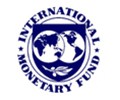The IMF said the Bank of England should be ‘very cautious’ about future interest rate cuts

The Bank of England needs to be “very cautious” about future interest rate cuts as UK inflation is likely to remain the highest in the Group of Seven advanced economies this year and next, the International Monetary Fund (IMF) chief economist said on Tuesday.
The advice from the IMF’s Pierre-Olivier Gourinchas comes after the IMF forecast the UK economy will grow 1.3% in 2025 and 2026 – an upward revision of 0.1 percentage point for 2025 and a downward revision of 0.1 percentage point for 2026 compared with the last forecast in July.
While this puts Britain on track to become the second-fastest growing economy in the G7 this year after the United States and the third-fastest in 2026, consumer price inflation is expected to average 3.4% this year and 2.5% next year, the IMF said, the highest in the G7 and an upward revision since forecasts in April.
British Finance Minister Rachel Reeves and Bank of England Governor Andrew Bailey attended the IMF’s annual meeting in Washington this week, where participants will discuss how the world is adjusting to new tariffs imposed by President Donald Trump.
HIGH UK INFLATION PARTIALLY REFLECTS THE SOLE FACTOR
The IMF said the higher inflation forecast partly reflects regulated price increases and is “projected to be temporary, with a weak labor market and moderate wage growth”.
But Gourinchas said there were risks to this forecast as UK businesses and households’ expectations of future inflation increased and wage growth remained high.
“The way forward for the Bank of England must be to be very careful in easing and ensuring that inflation is on the right track,” Gourinchas said at a press conference on the IMF’s new global outlook.
The BoE has cut interest rates five times since August 2024, lowering them to 4% from 5.25%, but the most recent rate cut in August was only approved by a narrow 5-4 margin and financial markets have not fully priced in another rate cut until March 2026.
BoE Governor Andrew Bailey said he expects interest rates to be cut again, but when and by how much depends on inflationary pressures in the economy.
Speaking at a separate event in Washington, Bailey said official labor market data released Tuesday morning supported his view that UK inflation pressures were starting to ease.
“I’ve been saying this for some time, but I think we’re seeing a weakening labor market,” he said at a lunch hosted by the Institute of International Finance.
Official figures showed that UK private sector annual wage growth fell to its lowest level since late 2021 while unemployment rose to its highest level in four years.
Bailey said uncertainty over US tariffs had caused businesses to tell him they were delaying investment, but the central bank had not detected a clear impact on inflation.
UK ‘DOING SOMETHING RIGHT’ ON GROWTH
The IMF’s forecast for Britain came alongside a wider upgrade to its global outlook that overall showed a slightly smaller impact on advanced economies compared with initial fears of the highest US tariffs in a century.
Gourinchas said Britain’s faster growth than most G7 countries showed it was “doing something right” and Reeves welcomed the IMF’s prospects for economic expansion.
“This is the second consecutive increase to this year’s growth forecast from the IMF,” Reeves said in response to the change on Tuesday. “But I know this is just the beginning. For many people, our economy is at a standstill.”
The IMF said the upward revision of UK growth in 2025 reflected strong expansion in the first half of the year. However, total growth in 2025 and 2026 is still estimated to be 0.4 percentage points below what the IMF predicted in October 2024 before Trump was elected.
Britain’s large economic growth also reflects high levels of immigration.
On a per capita basis – which is a better proxy for average living standards – the IMF estimates Britain’s gross domestic product will increase by 0.4% this year and 0.5% in 2026. The latest estimate is the weakest in the G7 despite being close to Britain’s historical average in the decade leading up to the 2016 Brexit referendum.
Source: Reuters
